
(Click to enlarge.)
by John P. Pratt
31 Jan 2019, 1 Reed (SR), 1 Fulness (V, UMa)
©2019 by John P. Pratt. All rights Reserved.
|
1. Traditions 1.1 Move to France 1.2 Descendants of Jesus? 1.3 Traditional Dates 2. Proposed Dates 2.1 Mary Magdalene 2.2 Marriage 2.3 Birth of Sarah 2.4 Martyrdom of James 2.5 Birth of Joseph 3. Who is the "Firstborn"? 3.1 The Levirate Law 3.2 Christ: Son of David 3.3 Firstborn of Jesus: Joseph 4. Conclusion Notes |
The vital dates of Mary Magdalene have never been sought in my research because what is usually required to find precise dates of even great religious leaders is (1) at least the year of birth and death and (2) known vital dates of their spouse, parents, or children. Until this month I had never seen even an estimate of Mary Magdalene's birth or death dates, much less of her family, so the attempt was never made.
 |
It occurred to me that the accuracy of those dates could be evaluated because Mary Magdalene was a towering[1] spiritual figure who was known to be such a close companion to Jesus that after His resurrection, He appeared first to her and then sent her to notify the twelve disciples of His rising (John 20:17-18). Thus, she appears to have been very important to Him. There are traditions that she was the wife of Jesus and the reason that her name was in those king lists is that they wished to claim Jesus Christ as their ancestor by virtue of their having descended from her.
In an earlier article, when it was learned that there was a traditional death year for the Virgin Mary, sacred calendar research was used to verify that death year and even discover her precise birth date. That date was confirmed by calender links to her son Jesus and to great women including Rachel and Miriam.[2] Thus, those same techniques could be applied to Mary Magdalene starting with those traditional dates and then looking for similarities to known dates of her supposed husband Jesus Christ. And in the case that those traditions were confirmed, then the vital dates of any legendary children might also be found because they should link to both parents.
Let us first look at traditions about Mary Magdalene with associated dates to see if the traditions can be at least partly verified. If potential dates can be found, the resulting calendar patterns will be compared to patterns in already proposed dates for some of the great patriarchs. The Lord has promised that He will always give us patterns by which we can know the truth (D&C 52:14).
There are traditions about where Mary Magdalene went, about her family, and about dates of events. Let's review each.
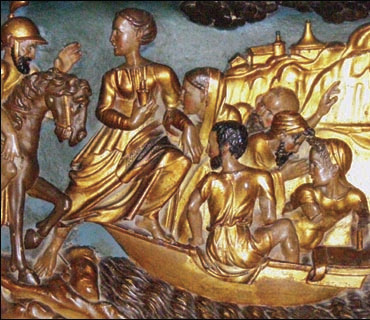 |
Tradition has it that, after the execution of St. James in Jerusalem (son of Zebedee and Mary Salome), Mary Magdalene, her sister Martha and brother Lazarus were persecuted by the Jews of Jerusalem and imprisoned. The Jews were afraid of the crowd if they were to execute the prisoners so they towed them off the shores of Palestine in a boat without sails or oars or supplies and abandoned them to the open sea. Others in the boat included Mary Jacobe, mother of [the apostle] James [the Less] and the sister of the Virgin Mary, Mary Salome, mother of the apostles James and John, Maximin, one of the seventy disciples of Christ, Cedonius, the blind man who was miraculously healed by Jesus, Marcelle, Martha's servant, and Sara, maid of the two Marys.
After narrowly escaping death during a storm at sea the boat finally came to shore on the coast of Gaul in a town now called Saintes-Maries-de-la-Mer in Camargue [coast of southern France].
Mary Jacobe, Mary Salome and Sara remained in Camargue. Martha traveled towards Avignon and ended up in Tarascon. Mary Magdalene, Lazarus, Maximin and Cedonius traveled on to Marseille where Mary Magdalene began to preach. They ended up converting the whole of Provence. Lazarus became the first bishop of Marseille. Mary Magdalene then went on to Aix where Maximin had already gone, some twenty miles north of Marseille.
Maximin became the first bishop of Aix and Mary Magdalene retreated to a mountain cave on the plain of the Plan d'Aups known as La Sainte Baume ... [3]
Here it is seen how strong and old these traditions appear to be. The modern cities of Marseille (Marcelle) and Saintes-Maries-de-la-Mer (Saint Marys of the Sea) are even named for them.
 |
The boat first landed on the shores of Africa where they got sails and oars and supplies. Then they were equipped to sail to Marseille. Joseph of Arimathea was very familiar with the way there because it was en route to the tin mines in the British Isles. He was a wealthy tin trader and man of great influence. After they arrived in Gaul (France) he and the Virgin Mary continued on to the British Isles. He had been commissioned by the Apostle Philip to take other men to teach the gospel and start a church there, which he did at Avalon. It was there that the Virgin Mary died.
These traditions were familiar to me but alone did not provide any dating clues other than the reference to the martyrdom of James.
Other traditions speak of Mary Magdalene having married Jesus Christ and even having had His child. These traditions usually emphasize that the pedigrees of several European kings lead back to Mary Magdalene, meaning that the kings are not just descended from Judah (Zerah, red rose) or even David (Pharez, white rose), but even from the Son of David, Jesus Christ.[5]
One tradition known to me about the boat trip to France stated that Mary Magdalene's daughter was on the boat with her and that she was the child of Jesus. That was left out of the summary given above, perhaps because they wanted to just focus on Mary Magdalene herself and not complicate the issue by introducing an idea which many Christians would consider to be heresy.
Something which Jesus taught suggests that He would indeed establish an actual Kingdom of God in Europe. That phrase "Kingdom of God" usually referred to a political kingdom, complete with an army, whereas "Kingdom of Heaven" refers to a religious organization. Notice how He explained the parable of the evil husbandmen who killed not only the servants, but even the son of the lord of the vineyard. The listening Pharisees understood that the lord would destroy them and let out his vineyard to others who render to him the fruit (Mat. 21:33-41). Then Jesus added:
"The kingdom of God shall be taken from you and given to a nation bringing forth the fruits thereof.
And whosoever shall fall on this stone shall be broken: but on whomsoever it shall fall, it will grind him to powder." -- Mat. 21:43-44
The "grind to powder" phrase is reminiscent of the prophecy in Daniel that the nations of the world will be broken into pieces by the Kingdom of God (Dan. 2:34-35). The prophecy in Daniel refers to the Kingdom of God to be set up to reign in the Millennium, but here the image is apparently that the Kingdom of God which had been set up by King David and which indeed had been the greatest world power before Assyria, would now be ground to powder by Titus in AD 70, which would end the nearly 2,000-year existence of the Jewish nation. He said that the Kingdom of God would be given to another nation, almost certainly referring to the European gentiles!
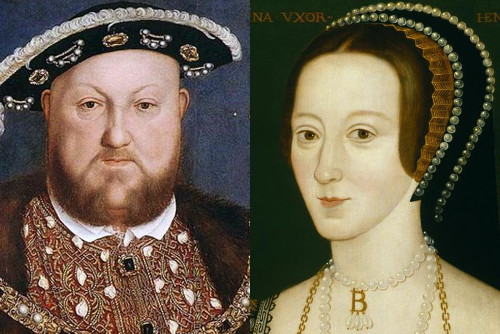 |
Another scripture to consider is Isa. 53:10. "Yet it pleased the Lord to bruise him; he hath put him to grief: when thou shalt make his soul an offering for sin, he shall see his seed". What does it mean that when the Savior atoned for our sins, He would see His seed? The wicked priests asked Abinadi this very question, and he responded that all who would be converted to His gospel could become His seed (Mosiah 15:11). That is certainly true, but often scriptures have multiple meanings, and Isaiah could also have been predicting a posthumous child being born to Christ who could be the heir of the Kingdom of God to be transferred to the gentiles.
One point of interest is that some traditions said that the daughter's name was Sarah. That is a match to the tradition quoted above that there was a young maid named Sarah on the boat with Mary Magdalene and the others. She is there portrayed as the maid of the two Marys (Mary Jacobe and Mary Salome). If someone were trying to protect this damsel from the danger of being known as the offspring of Jesus and Mary Magdalene, that would be a great way to do it!
LDS readers may be interested to know that several early Church leaders taught that indeed Jesus Christ had been married to Mary Magdalene and that they had offspring. It was pointed out that several of the apostles and other leaders were believed to be actually literal descendants of Jesus Christ. This was usually said as a whispered aside in unpublished talks. It is certainly not official LDS Church doctrine! Only one third-hand reference from the Prophet Joseph teaching of literal descendants of Jesus is known to me:
While visiting with Zina, she related a conversation that occurred between her and and a Sister Repshire upon events in Nauvoo, where the Prophet Joseph Smith sealed her, Sister Repshire, to a Judge Adams of Springfield, Illinois.
The Prophet stated to her (Repshire) that Judge Adams was a literal descendant of Jesus Christ.[6] (emphasis in original)
Here is another example which includes a purported statement by the LDS Church President:
In a solemn assembly held in the Salt Lake Temple July 2, 1899, more information pertaining to the descendants of Christ was divulged. The Apostle George Q. Cannon made the disclosure after which the President of the Church, Lorenzo Snow, confirmed his statement.
President George Q. Cannon ... said, "There are those in this audience who are descendants of the old Twelve Apostles -- and shall I say it, yes, descendants of the Savior himself. His seed is represented in this body of men."
Following President Cannon, President Snow arose and said that what Bro. Cannon had stated respecting the literal descendants among this company of the old apostles and the Savior himself is true. The Savior's seed is represented in this body of men.[7] (emphasis in original)
Having attempted to establish that the idea that Jesus had literal descendants is not outright heresy, let us move on to the traditional dates which were found on the LDS genealogy website. There it was claimed that Mary Magdalene was born in the year AD 3 and died in AD 63.
Lest someone think that a likely date can be found in any year, consider the following. In any one year there are usually a few dates which are simultaneous holy days on many sacred calendars. They may or not coincide with any holy events at all. So how can Mary Magdalene's vital dates be determined?
After having analyzed over a thousand dates, certain criteria have been learned to be required to be met to propose as a birth or death date for a great spiritual leader whose precise date cannot be known from historical records. It is a "record in the heavens" which testifies of them. These are the criteria:
Armed with the investigation tool of knowledge of sacred calendars, let us now see whether these traditions can be verified.
The attempt was made to find vital dates for Mary Magdalene which fulfill several of the criteria listed in the last section. Let's look at searches for her birth and death dates, and then, if successful, for a possible marriage date and possible children. The derivation of these dates is discussed in more detail than done in earlier articles because it is desired to show just how compelling the evidence can be when several of the rare criteria are met.
The search for a possible birth date in AD 3 and death date in AD 63 was surprisingly fruitful. Consider the date of the afternoon of Thu 19 Jun AD 3 (Gregorian). That day was 1 Tammuz, a major holy day on the Perpetual Hebrew (PH) Calendar, fulfilling Criterion 1. It was 1 Temple on the Sacred Round (SR), which is not only a major holy day, it is the one day in each cycle of 260 days which represents birth. It was the birthday of Rebekah, Leah, Rachel, and Miriam! That is a bull's-eye!
The day was also 1 Creation on both the Venus (V) and Mercury (M) calendars, being major holy days representing a new beginning. It was also the rare major holy day of 1 Fulness on the Mars Calendar (Ma) which appears to represent a fulness of priesthood. It only occurs about once in two years. On the Uniform Star Calendar (US) the day was that of one of the brightest stars in the sky, Capella, which has the English name "Glory" in my work. It is a major holy day on that calendar.
Any direct tie to Mary Magdalene is not yet obvious, except possibly that it is the only bright star whose name Capella represents a female, being a nanny goat with two kids. It is very rare for all of these holy days to appear together. Even though this day would be a great birthday for somebody, there are no links yet directly to indicate it is hers.
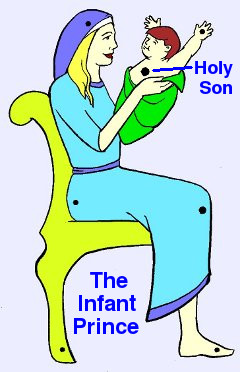 |
Both star days, however, are an astounding match perfectly suited to support these traditions about Mary Magdalene and hence that this is indeed her death date. That date on the Star Calendar (S) was the holy day of the star named the Holy Son. It is the bright star in the prince in the constellation of the Infant Prince. He is born to a queen. Moreover, the day was the major holy US star day of Spica, the Seed of Woman, the bright star in the Virgin which represents her holy son. That's two witnesses, rare indeed, that this day is for the mother of holy offspring. Thus, even without other witnesses, this star indeed appears to be correct without any dependence on the proposed birth date.
Now consider links to dates in the life of her proposed spouse, Jesus Christ. First, one compelling link fulfills Criterion 6: beginning with the birth of Jesus on 1 Reed, it is an exact number of sacred rounds to her death on 13 Grass. That is, 13 Grass is the day before 1 Reed, so her death on 13 Grass would exactly complete a cycle. Another example is that Jesus was born on Passover, 15 Nisan (PH). He died on Lamb's Day, 14 Nisan, which completed His life of exactly 33 Hebrew years. If He had been crucified on 15 Nisan, He would have lived one more day than 33 years. Another example is that Rebekah died on the day 1 Lord (V) and Isaac died on the day 0 Lord (V), being the day before 1 Lord, so that his death completed an exact number of Venus cycles from hers.
The completion of cycles between the birth of Jesus and the proposed death date of Mary Magdalene is strong evidence, but there many more ties to Jesus, witnessing that these dates are indeed correct. The most holy date for the end of the life of Jesus is not his death date but the Resurrection date. That occurred on the day 1 Resurrection (V) and the proposed death date for Mary is 0 Resurrection (V), so her death would have also completed an exact number of cycles from the Resurrection. And note that the holy days on the Venus Calendar are not just any holy days, but the very days representing resurrection!
And there is yet another completed cycle as another witness of the link between this date and the Savior. On the Priest Calendar, the day representing resurrection is 1 Arise (P) as noted above. The date of the Savior's resurrection was also on 1 Arise (P), so there is another calendar link between the Savior and this proposed date.
All of these links to Jesus are to her proposed death date. What about a link to her birth date? There is one excellent link. Even though she is born only about three years after Jesus, which is not enough time for most planetary cycles, this is a case for which rapidly moving Mercury is ideal. It was exactly ten Mercury cycles from the birth of Jesus on 1 Lord (M) to the proposed date for the birth of Mary Magdalene on 1 Lord (M)!
In summary, the proposed death date is holy on nine of sixteen known sacred calendars, which only occurs about once per year, with three of them linking directly to Christ and the two star dates both referring to having a holy son. That is so unlikely as to be compelling evidence both that the date is correct and that it is exactly as one would expect for the wife of the Savior! The evidence for her birth date is not as strong, but there is one excellent link to birth date of Jesus.
Recent articles have discussed the pattern of the marriage dates of the great patriarchs including Adam, Noah, Abraham, Isaac and Jacob.[8] The one pattern that all of those marriages had in common was that all were on a holy day in a holy year on the Enoch Calendar. The holy year requirement is tough because only about one year in ten is a holy year and usually the approximate year of a marriage is known and is not even close to a holy year. Even so, it would be surprising if the marriage of the Savior did not follow the pattern established by these great patriarchs.
Here again we are in luck (if you believe in luck)! There is a perfect marriage date available which ties to both Jesus and Mary Magdalene, making it their own "special" day!
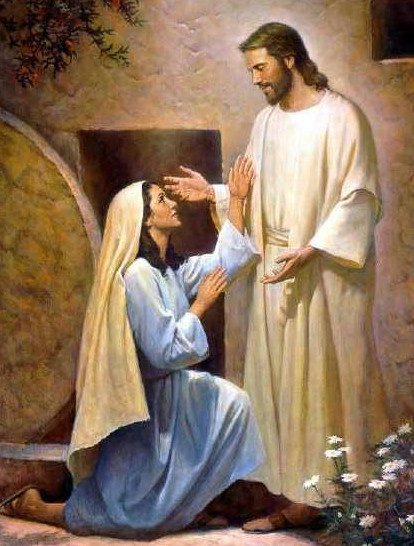 |
An excellent date to propose for their marriage is Sat 16 Oct 32. That was the Feast of Tabernacles (UE), a major holy day. What makes it perfect for both of them is that on the Priest Calendar it was 1 Arise (P) just as her death date and His resurrection date. It was 1 Eagle (SR), a day representing fulness of priesthood, 1 Prime (M, UM) representing rebirth, and also Rebirth (Mars) which especially ties to Mary Magdalene, being a rare major holy Mars day. It was 1 Sco (S) and the Feast of Trumpets (US), both holy star days. Moreover, it was two weeks after the Transfiguration and after the Hebrew Feast of Trumpets, so it should have been an open calendar date for them. It looks like an ideal date, especially because of the day being 1 Arise (P) and the Priest day being important for priesthood ordinances, which ties to both of their vital dates! Thus, it is here proposed that their marriage was during the afternoon of Sat 16 Oct 32.
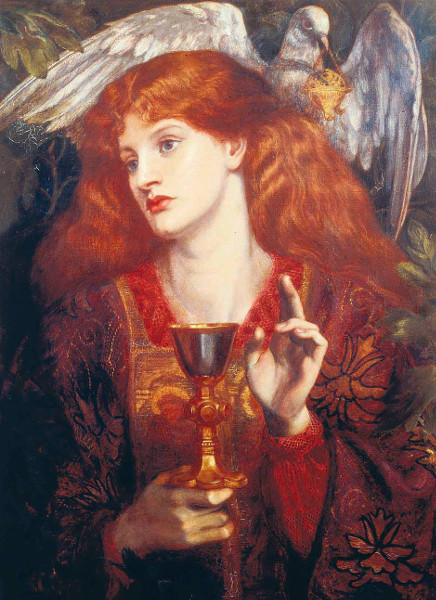 |
The most likely time for birth would be nine months after the marriage. Mary Magdalene would have only been six months along at the time of the Crucifixion and hence still not showing much, especially under the loose dress of the time. She could then go into seclusion to have the precious child.
Sure enough, there is just such an ideal birth date available for Sarah. The afternoon of Sat 16 Jul 33 was a holy Decision Day (2 Ab, PH) on the Hebrew Calendar, 1 Rabbit (SR) a holy day suggesting fertility and many descendants, 1 Fulness (M, UM) on both Mercury Calendars, all of which are nice, but do not tie to Jesus or Mary.
On the other hand, the day is holy on four other sacred calendars which do link to them. That day was 1 Birth (UV), the one rare day representing birth, which links her to the parents, who were both born on holy days on the Venus Calendar. Moreover, the day was also 1 Creation (Mars) which is a link to Mary Magdalene's birth date on 1 Fulness (Mars). Mars holy days are rare (only 7 major in two years) so can be counted as a link between mother and daughter and hence a confirmation of both of their proposed birth dates.
It is, however, the last two witnesses which lock in this date as the birth of a princess. The day was King, Regulus in Leo the Lion (S, US), that is, the star of royalty on both star calendars! Thus, it is proposed that Jesus and Mary Magdalene did indeed have a child, who could very appropriately have been named Sarah (Princess), on Sat 16 Jul 33.
Before looking for a birth date for a possible of son of Mary Magdalene, let's look at the one precise date given in the traditions about the trip to France where there is no mention of her son nor of Mary Magdalene ever having been married, nor Sarah being anything more that a maid to the two Marys. Thus, we would expect the birth of the son to be some time after she arrived in France.
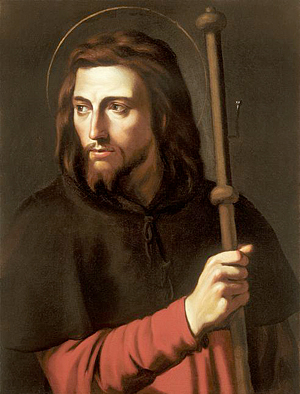 |
An impressive date is easily found meeting those requirements and worthy of the martyrdom of an apostle. The evening of Sat 2 Apr 44 was the beginning of Easter Sunday (PH), right in the middle of Passover week. It was also Easter (UH, UE, S), 1 Light (SR), 1 Death (M), 1 Birth (UMa), and New Year (1 Tau, US). It was a holy day on ten sacred calendars! Thus, it is here proposed to have been his martyrdom date!
At this point, we may return to what was noticed this month in the FamilySearch.org records about the offspring of Mary Magdalene. She was said to have had a son called either Joseph or Joses or Jozue (all of which are forms of Joseph), who was born in the year AD 44! No daughter was listed. So now we not only have a year in which to look for a birth date, but also the probability that the son was born after they arrived in France. Otherwise, her having a newborn baby aboard would have added drama and been mentioned in the legends. Moreover, the father would also likely have been at least named as a passenger.
Looking after April of AD 44, a perfect date is again found which ties baby Joseph to both Mary and Sarah. Sat 1 Oct 44 was the major holy day Great Day of the Feast of Tabernacles (PH), and 1 Temple (SR). That not only fulfills the minimum requirements of the first two criteria above, but 1 Temple (SR) is the proposed birth date of Mary Magdalene. That was the date still somewhat in question, so now that is a compelling tie because that is the one day in 260 on the Sacred Round which represents birth. Hopefully the reader is seeing how this work is like putting together a jigsaw puzzle (like most of genealogy is!) in that each piece gets easier as more are put together.
That day was also Tabernacles (UE), the day of birth on the Enoch Calendar, when one gets his tabernacle of clay. Thus, he was born on the day for birth on two calendars, which is rare indeed. Moreover, Tabernacles (UE) was the day of her marriage to Jesus, so this links Joseph to both Mary and Jesus, rather than the biological father. That will be seen to be very important. In fact, that day was also 1 Arise (P), which links this date to the Resurrection date, the marriage date, and Mary Magdalene's death date. Not only that, but the day was also Trumpets (S, US), even as the marriage star day was Trumpets (US).
All of these witnesses are screaming to us that this child is somehow the product of the marriage between Jesus and Mary Magdalene because the day of birth is identical to the marriage date on three sacred calendars (UE, P, US). If readers are not gasping for breath at this point, they have not understood how incredibly rare such events are!
Now, in addition of all of that, this date of birth is also 1 Birth (UV), being exactly the same day as proposed for the birth of Sarah! That forms an incredibly strong link between those siblings. Remember that the day 1 Birth (UV), which represents birth, occurs on only one day every 585 days. The interval between the two proposed birthdays for that brother and sister is 4,095 days which is exactly 7 Venus cycles!
Thus, these four dates are all closely linked together (see Figure 1), very similar to the pattern found in the families of all of the ancient patriarchs. More could not have been asked of these dates for them to testify not only of a very holy family, but also one in which Jesus is the father of both children. But how can that be, when He had died more than a decade before the birth of Joseph? Let us now turn to that very question.
 |
Another important question is raised about why the European kings trace their lineage to Joseph rather to Sarah. The answer has everything to do with the law of Moses and just how an heir is determined in any family. The principal heir is the "firstborn", which is a title usually referring to the son who was born first. It is important to understand that "firstborn" refers to a son.
If a married man had no son to be his heir when he died, a special provision was included in the law of Moses to raise up an heir to him posthumously. The scripture explicitly states that the purpose of this law was to prevent the name of the deceased from disappearing (Deut 25:5-6).[10] That law was that if the deceased had brothers that lived nearby, a brother was to take her to wife to raise up a son to her to become the "firstborn" of the deceased. This law is called the Levirate Law. The word "levirate" is itself a derivative of the Latin word "levir" meaning "husband's brother". Note that the brother was only required to fulfill this duty until a son was born. Then the deceased would have an heir to inherit his land and continue his name and legal posterity. The new heir would be considered to be the legal son of the deceased, as would any new daughters which might have been born earlier from this union.
The key point to understand here is that the whole point of the Levirate Law was to provide the deceased husband with a legal heir. The biological father was not particularly important, except that it would be best to be a brother or paternal half-brother so that the grandfather of the heir would be the same man whether the genealogy were traced through the legal or biological path.
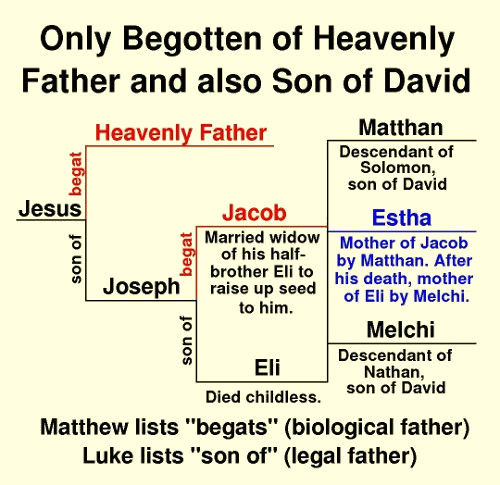 |
Fortunately, Luke provides us an answer to that difficult question. Joseph was a legal "son of David" in two different ways. There are two patriarchal genealogies of Joseph given in the New Testament, each provided for the express purpose of proving that Jesus was a son of David. Matthew gives the "begat" genealogy of the actual biological ancestry of Joseph back to King David through his son Solomon. Luke provides the legal ancestry of Joseph, to be a legal son of David through his son Nathan. It is Luke's version which gives us the clue. It shows that it was not necessary to be a biological descendant of David to be considered a "son". That is because Joseph was considered to be the son of Heli (Luke 2:23), but according to the early Church Fathers, Heli died childless! The biological father of Joseph was Jacob (Mat. 1:16), who was merely raising up seed to Heli (Greek for Eli).[11] Thus, Jesus was a legal "Son of David" because he was the legal son of Joseph, even though being the "Only Begotten" of Heavenly Father (see Figure 2). That apparently answers the tough question that Jesus posed. Note that in this case Jacob was the maternal half-brother of the deceased, so that the grandfathers of Joseph are different and trace up a long line all the way to David before they join!
Of course, the importance this concept of just how a posthumous son can become the legal "firstborn" heir in kingdom is important to this article, because European kings claimed descendancy from a supposed son of Mary Magdalene named Joseph born after the death of Jesus.
Now we are ready to look at why the European kings considered Joseph, son of Mary Magdalene, to be the firstborn of Jesus Christ, apparently without much thought about who his biological father had been. That is, it was Mary Magdalene who was reverenced as the royal parent.
So who would have been the father of any son that Mary Magdalene might have had after the death of Jesus? The Levarite Law would indicate one of the half-brothers of Jesus! They were sons of Joseph, whether or not by Mary, so the firstborn heir who would be born to Mary Magdalene would trace his paternal pedigree though his grandfather Joseph even as if he had been born to Jesus.
Which brother of Jesus is indicated to have been the biological father of the firstborn of Jesus Christ? The names of the brothers were James (or Jacob), Joses, Simon, and Judah (or Jude or Judas) (Luke 2:23). The big clue is in the traditional name of that heir. The son of Mary Magdalene is apparently listed on the king lists with a name of Jozue, Joses or Joseph. All of those names are variations of Joseph. Joseph, the legal father of Jesus, had a son named Joseph. He was called Joses most likely to easily distinguish him from his father, even as today we might call him Joe. Thus, it is here proposed that the legal heir to the kingdom of Jesus was Joseph, sired by his uncle Joses and Mary Magdalene.
Note that the sacred calendars were testifying of this very point. The birth date of Joseph was linked to the marriage date of Jesus and Mary Magdalene on three different sacred calendars! That provided compelling evidence that this child was meant for that marriage!
The ancient kings knew exactly what they were doing in claiming their kingship from Joseph, son of Mary Magdalene and legal heir of Jesus Christ! Think of how King Henry VIII kept wanting to divorce (or behead) his wives until he got a male heir. This detailed explanation seems needed for us, who are not very familiar with the law of Moses and are living in a culture where it is taught that marriage is not important and that it was an arrogant aristocratic tradition for European royalty only to marry within their own family lines![12]
This article applies sacred calendar tests to traditions about Mary Magdalene having married Jesus Christ and having given him both a daughter and son. The son was believed to have inherited the right of kingship from Jesus Christ and many European kings trace their genealogy to Mary Magdalene through that son.
The tests applied to evaluate the veracity of those traditions were that the birth and death years listed in genealogy for both Mary Magdalene and birth year for her supposed son Joseph would necessarily match the patterns of the great patriarchs such as Abraham, Isaac, and Jacob. Those criteria were applied not only for those vital dates but also to discover whether there is a viable marriage date for her to Jesus and birth dates for children.
The results were overwhelmingly positive with more than ample calendar links between Jesus and Mary Magdalene and between each of them and the two children, and between the children, which validate the traditions about the existence of that family. Moreover, the Levirate Law was reviewed which indicated that the biological father of the son Joseph would likely have been Joses, one of the brothers of Jesus. That law is designed to raise up a firstborn heir to the then deceased Jesus. A strong confirmation of it being valid is that there are three separate calendar links between the son Joseph and the marriage date of Jesus and Mary Magdalene. Thus, sacred calendars even witness to Joseph being the heir to Jesus rather than merely the son of the biological father Joses!
This article reports on one of the first applications of sacred calendars to genealogical research, not only verifying traditions, providing precise dates, but even indicating the preference of the legal father over the biological father in this case. These calendars are a witness of a record in the heavens, created such that we can learn to read it. That record testifies with the authority of God!